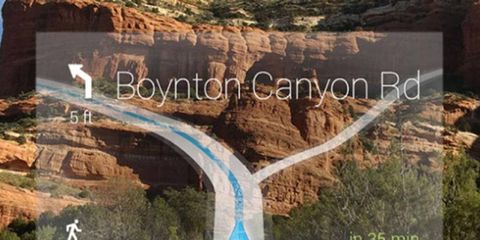There has been an amazing amount of talk about Google Glass, the wearable head-up display from the company that managed to turn “Help me find this on the Internet” into a $350-billion business. Much of the talk has included some combination of fear, uncertainty and doubt. Glass isn't even available to the public and won't be for another six months or so, but that hasn't stopped legislation from popping up around the globe banning its use while driving. West Virginia and the United Kingdom already have amendments pending, and a woman in California was recently issued a distracted-driving citation when the officer who pulled her over for speeding noticed her eyewear.
Here's the problem: In many cases, the legislators really don't know what they're talking about. Certainly, it isn't always necessary to be intimately familiar with a given thing before legislating against it—one needn't get tipsy to know that driving drunk isn't a particularly good idea. And the threat is real: Google Glass can indeed be incredibly distracting. The problem is, these legislation attempts are shortsighted. Glass isn't the only product in this space. Sam-sung's new Galaxy Gear smartwatch can also be distracting, as can the Pebble smartwatch. Even the Nike+ FuelBand lights up and screams for your attention from time to time.
These devices are just the tip of the spear, the first wave in a new category many think will be bigger than smartphones and tablets. In the not-too-distant future, this sort of tech will be embedded into “normal” sets of glasses. Your average watch will soon have some sort of smart functionality, showing emails and weather or other basic info. Following the spirit (if not the letter) of today's legislation, these will all be banned. Future drivers will need to go through a TSA-like process of taking off their watch and their glasses before entering the vehicle. Add some GPS-enabled shoes to the mix, and you could be in for the full airport experience.
This isn't a solution. The rules governing technology's proper and safe use need to be at least half as smart as the tech itself. Rules should be made in partnership with the industries in question, not in spite of them. Organizations like Car Connectivity Consortium are already helping to establish standards for what is and what is not safe. The National Highway Traffic Safety Administration weighed in earlier this year with its own set of recommendations, but they are draconian, to say the least. According to NHTSA's (281-page) document, any use of 3-D-style imagery in navigation systems is too risky and should be banned. If followed, these recommendations would send in-car technology, even that built into the dash, back to the Stone Age (also known as the '90s).
If this is what it comes down to, car ownership will become even less appealing to younger buyers, which is bad news for the auto industry. Navigation and location-aware services in mobile devices will be crippled by force, which is bad news for the consumer-tech industry, to say nothing about customers. NHTSA should be involved in the process, but only to define distraction tests and thresholds. Let the companies figure out what works and what doesn't. Engineers thrive when given a good challenge. Stifle them, and you risk stifling an auto industry that's just now getting its tech legs.















